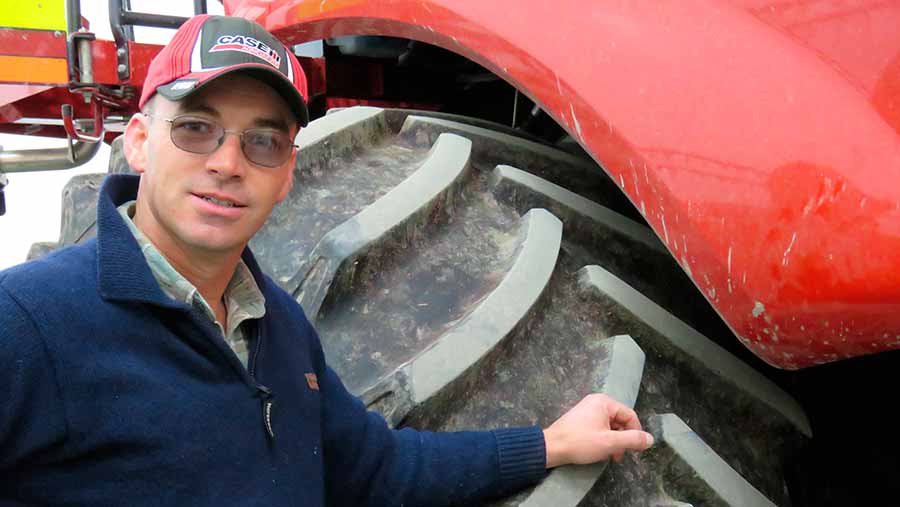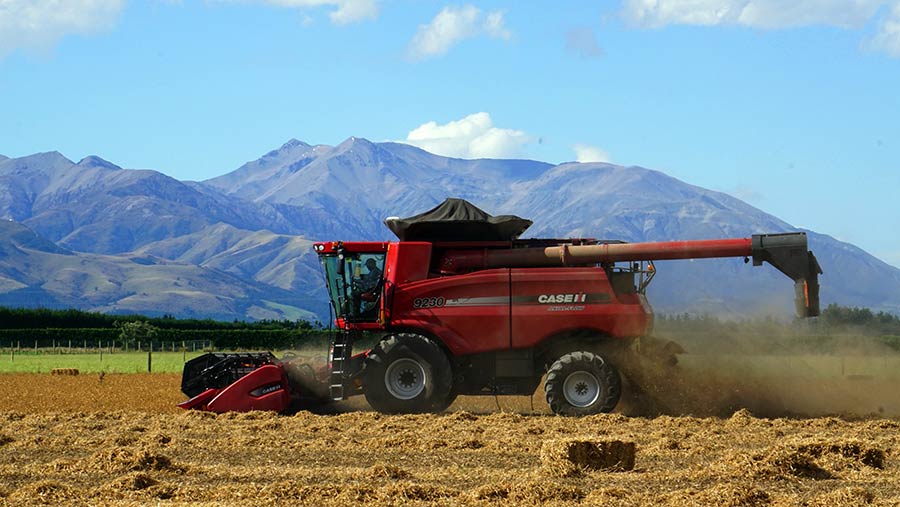Farmer Focus: Good pea yields as New Zealand harvest starts
 David Clark © Andrew Swallow
David Clark © Andrew Swallow There is something about starting the combine on the first morning of the harvest.
Eight months since it was cleaned down and carefully put away for the winter, there is the anticipation of how the crops will perform after a whole year of care and attention, the camaraderie of the harvest team and a bit of stress and pressure as well.
We are building a drying shed here at the moment and doing the whole project ourselves. It will be a great farm asset when completed and will complement our existing drying capacity to improve our harvest efficiency.
See also: Read more from our Arable Farmer Focus writers
However, like all good farm projects, it’s not quite finished and is making the start of the harvest particularly hectic, as I’m a builder in the mornings and a combine driver in the afternoons.
So far we have done two blocks of garden peas for seed, with the first yielding an exceptional 4.8t/ha and the second back at 2.5t/ha after it got a tong-up with a herbicide during our very wet spring.
Hybrid oilseed rape as a seed multiplication contract has done about 3.2t/ha across the whole field area, but we only harvest 80% of the field once the males are removed.

David Clark combining garden peas on the first day of harvest 2017 with Mount Hutt in the background © David Clark
We have marrowfat peas in windrows just a few days away from harvest, but we have had north-west gales blowing, which is our “Foehn effect” hot, dry wind blowing over the southern Alps.
It has been a nervous time hoping the rows stay put.
The local cereal market has picked up to $310-$330/t (£180-£195/t) for feed grains with the relative recovery in the Fonterra farmgate milk price, which has given a welcome opportunity to clear silos for the new harvest.
However, in many respects all of this is blowing in the wind really. In the next 12 months our fortunes are not going to be of our own deciding, but dictated by the volatility of the daily episodes of the “Celebrity President USA”.
If only it wasn’t so serious.
David Clark runs a 463ha fully irrigated mixed farm with his wife Jayne at Valetta, on the Canterbury Plains of New Zealand’s south island. He grows 400ha of cereals, pulses, forage and vegetable seed crops, runs 1,000 Romney breeding ewes and finishes 8,000 lambs annually.

